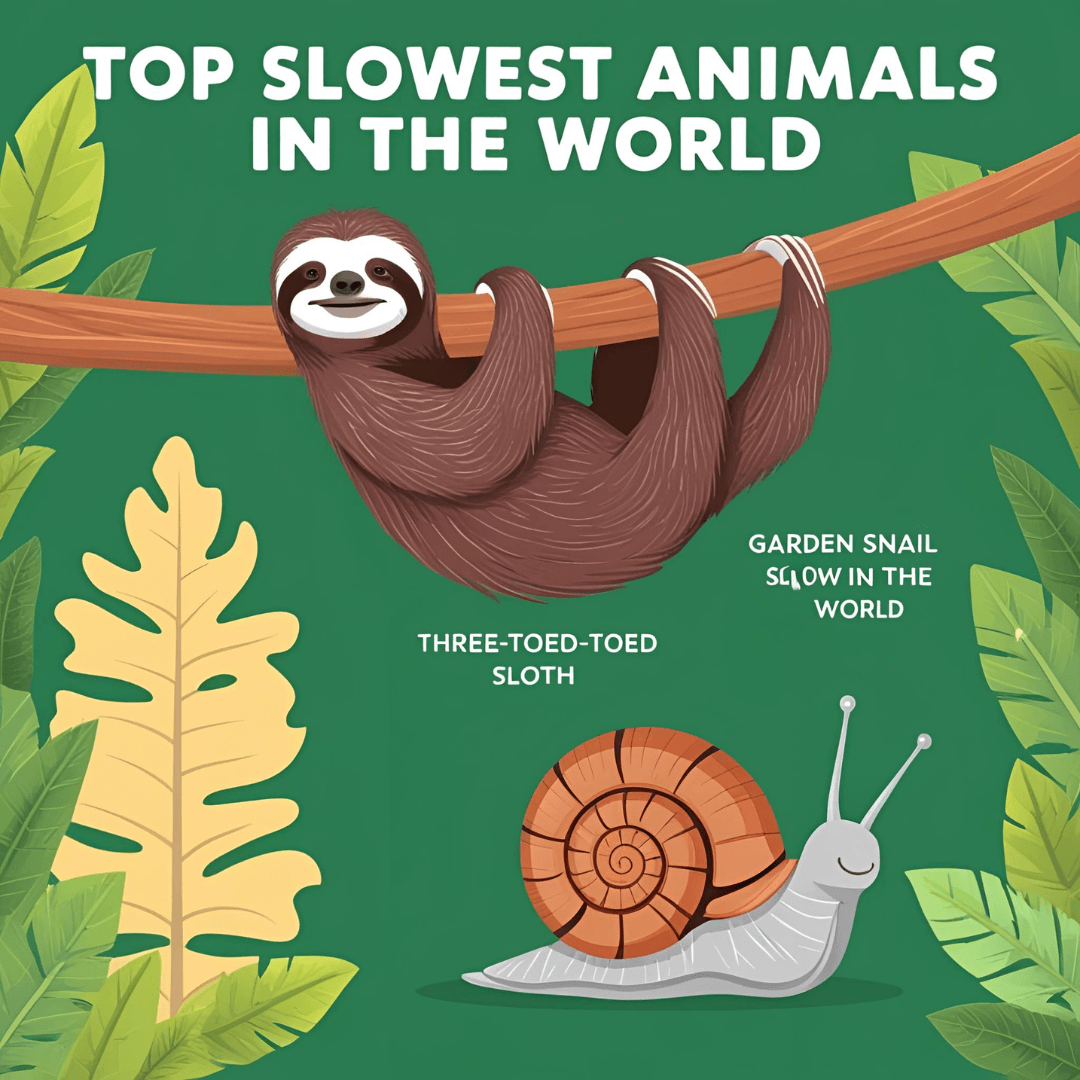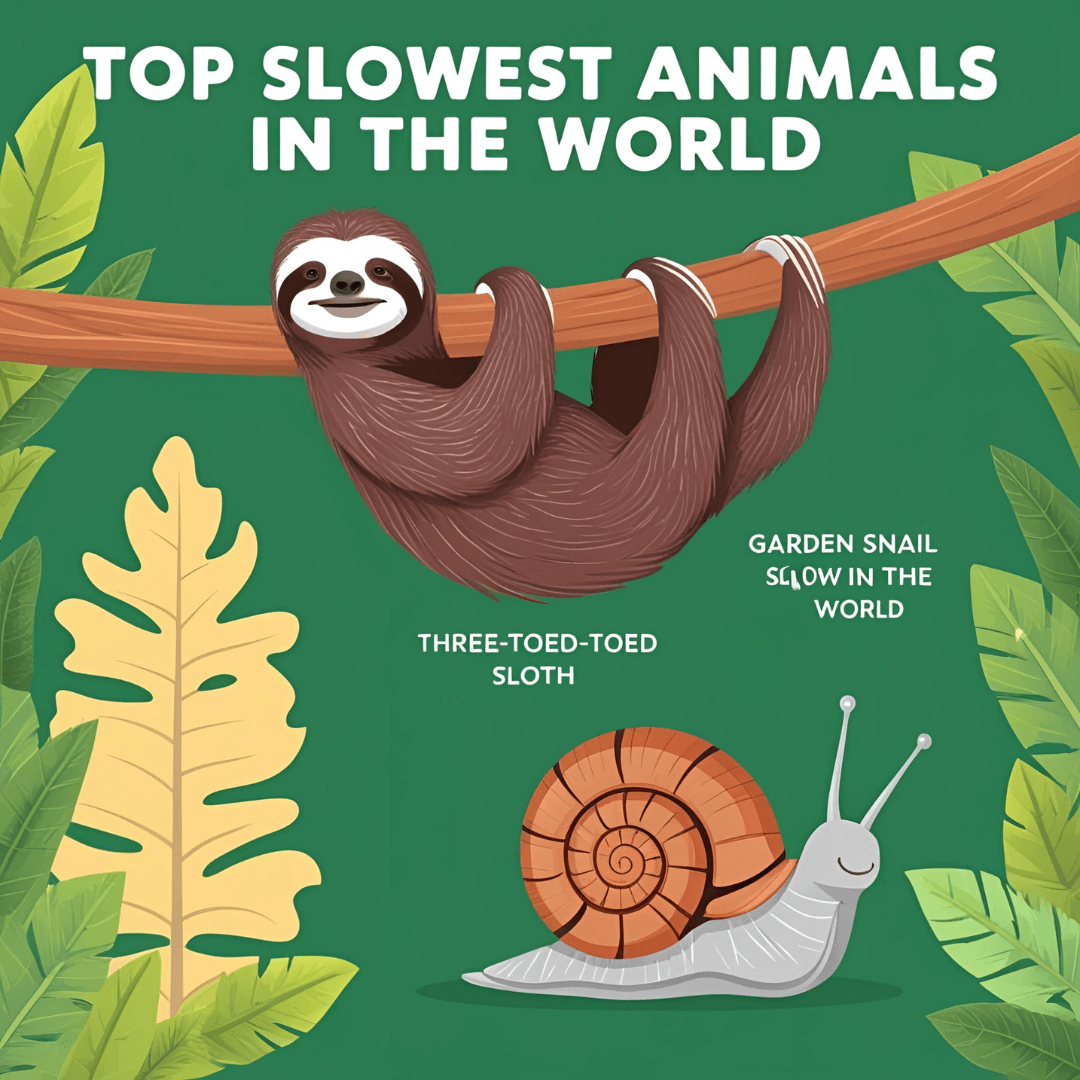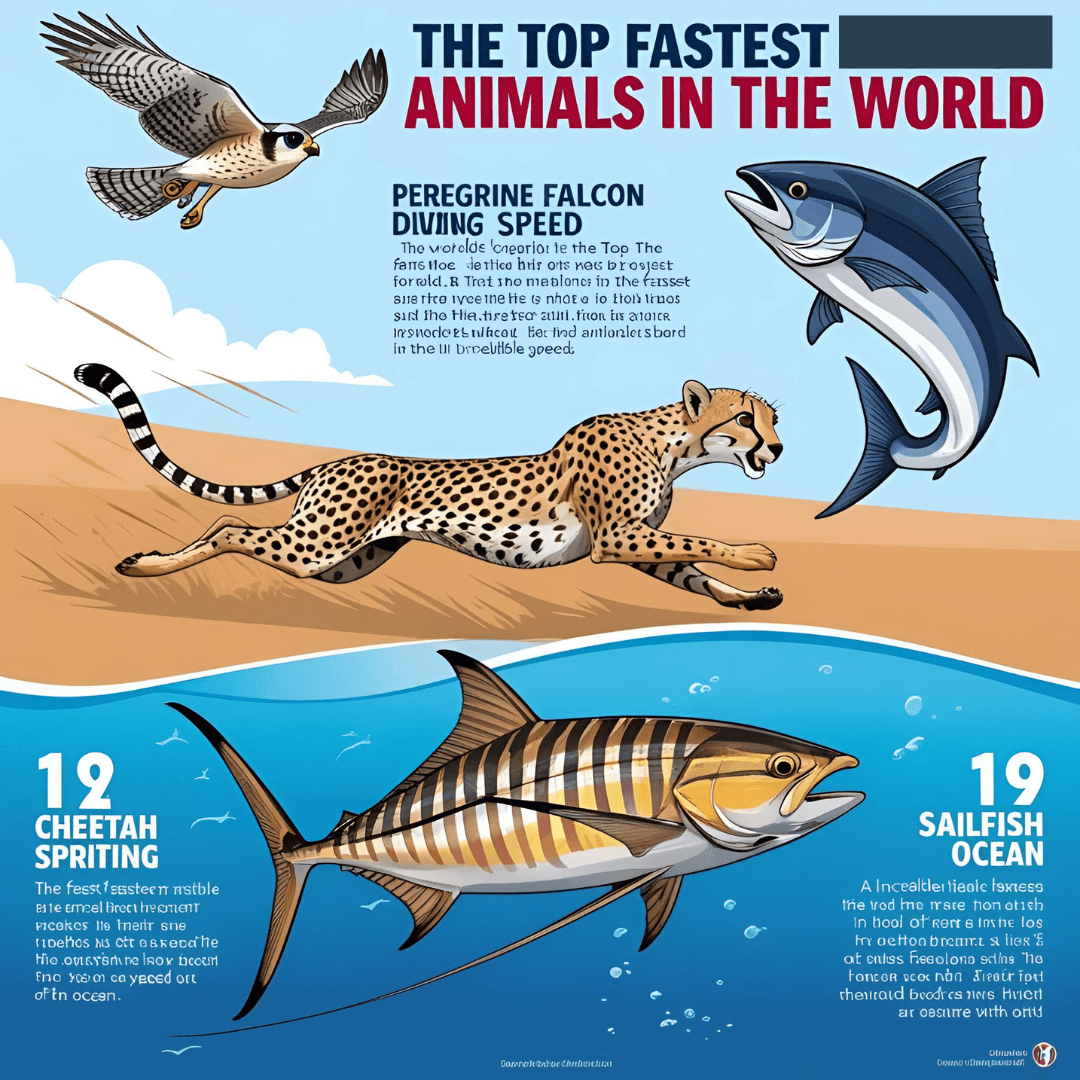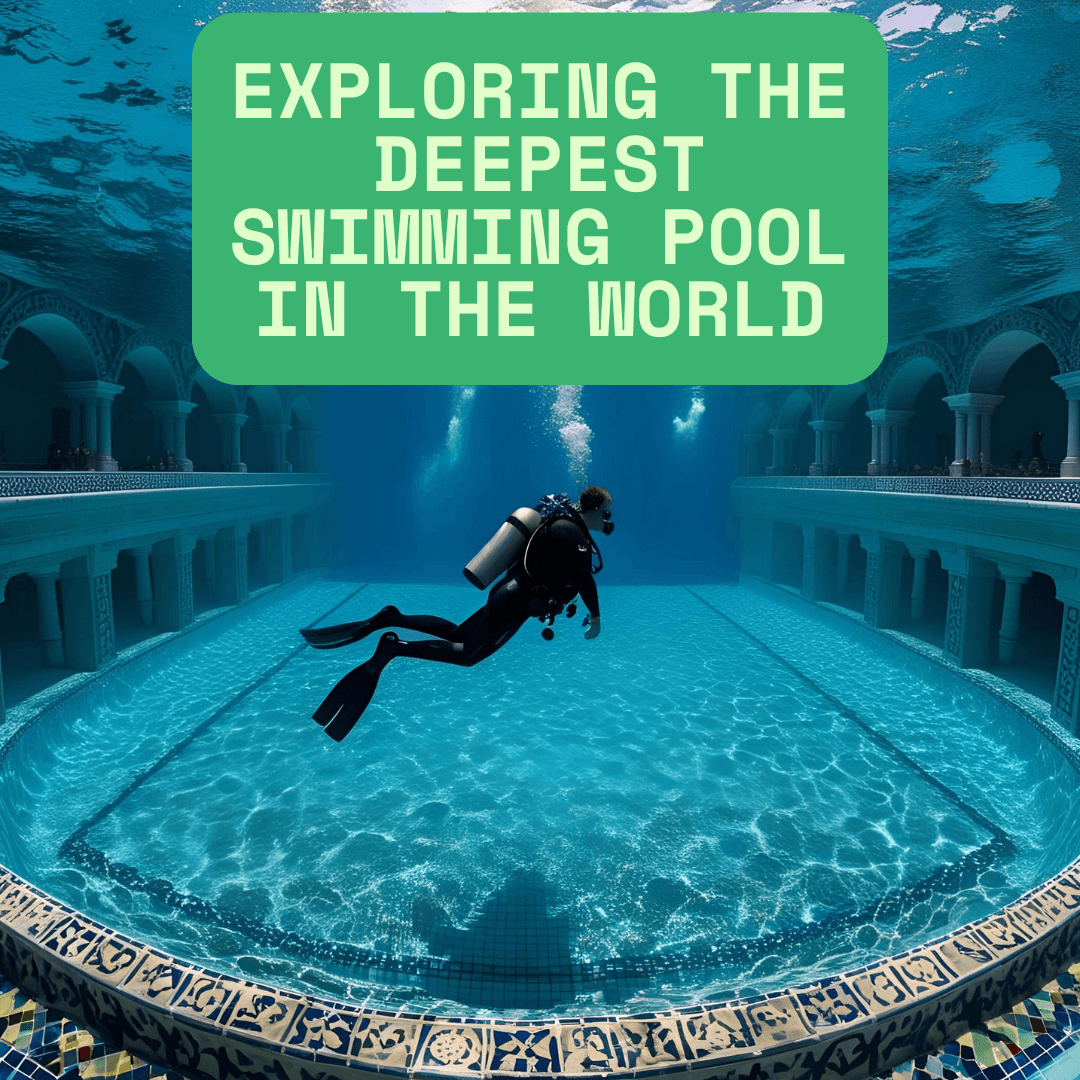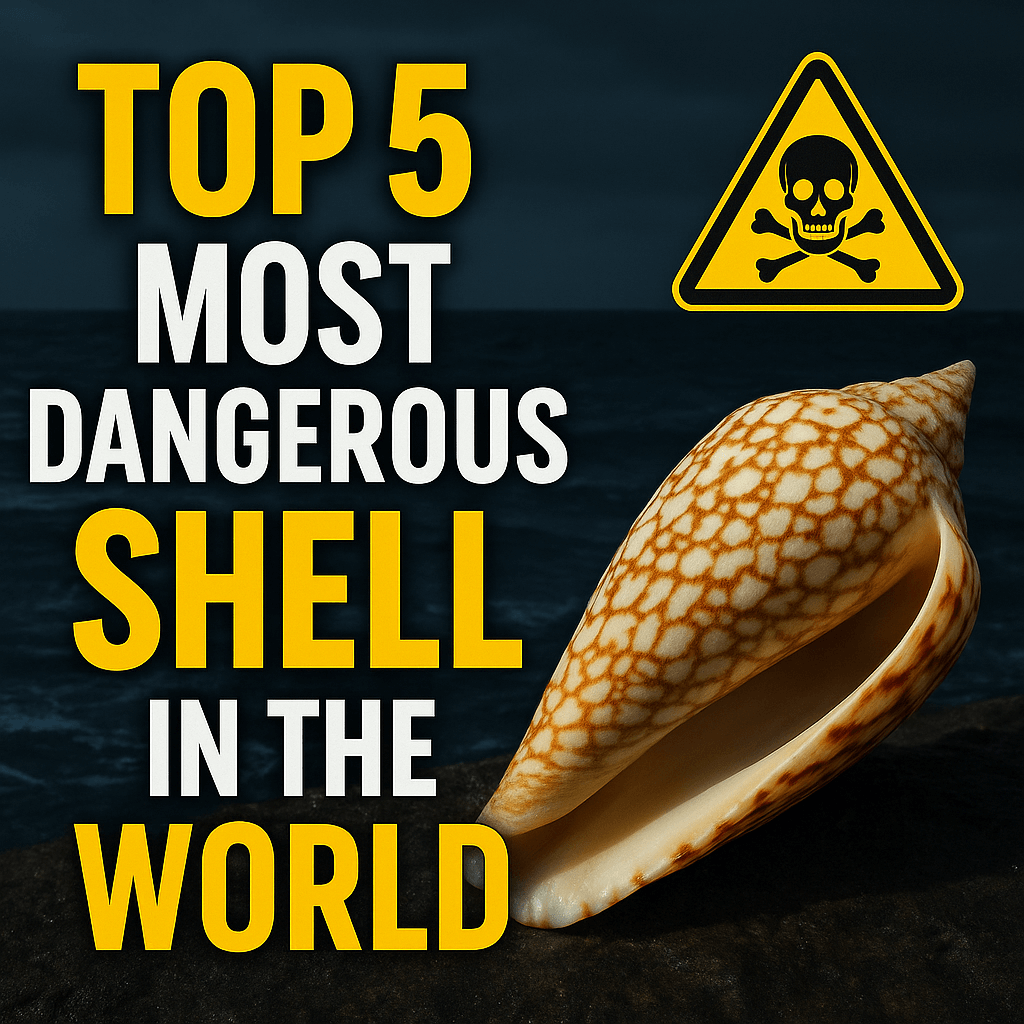When we think of the animal kingdom, our minds often go straight to the fastest creatures—cheetahs sprinting across the savannah or falcons diving at mind-blowing speeds. But what about the other end of the spectrum? The slowpokes of nature? These animals might not win any races, but they have evolved unique ways of surviving and thriving without needing speed.
In this blog post, we’re taking a deep dive (a very slow one) into the fascinating world of the slowest animals on Earth. From tree-huggers to ocean crawlers, these creatures show us that sometimes, slow and steady really does win the race.
1. Three-Toed Sloth
Speed: ~0.03 mph (0.05 km/h)
When it comes to slowness, sloths are the undisputed champions. Found in the rainforests of Central and South America, three-toed sloths are known for their leisurely lifestyle. They move so slowly that algae grow on their fur—giving them a greenish tint that actually helps camouflage them in the forest canopy.
Their sluggishness isn't laziness; it's a survival tactic. Moving slowly helps sloths avoid detection by predators like eagles and jaguars. They have a very low metabolic rate and can sleep for up to 20 hours a day, only descending from trees about once a week to relieve themselves.
Fun fact: A sloth’s digestive system is as slow as its movements—it can take up to a month to digest a single meal!
2. Giant Tortoise
Speed: ~0.17 mph (0.27 km/h)
Giant tortoises, particularly those from the Galápagos Islands, are living proof that slow doesn’t mean weak or uninteresting. Some of these reptiles can live over 150 years and grow to weigh more than 900 pounds.
Their slow speed is due in part to their heavy shells and slow metabolism. But they don’t need to rush—being herbivores, they spend most of their time munching on grass, leaves, and fruit at their own pace. Their longevity and resilience have made them icons of endurance and patience.
Fun fact: Charles Darwin was so fascinated by Galápagos tortoises that they played a crucial role in shaping his theory of evolution.
3. Seahorse
Speed: ~0.01 mph (0.016 km/h)
Seahorses are some of the slowest swimmers in the ocean. These tiny, mystical-looking creatures use a small fin on their back to propel themselves through the water—flapping it up to 35 times per second. Despite that rapid movement, their progress is painfully slow.
Their lack of speed is balanced out by their incredible camouflage. Seahorses can change color to blend into coral reefs and sea grasses, which helps them avoid predators. Their upright swimming posture and the fact that they don’t have scales add to their unique appearance.
Fun fact: Male seahorses carry the babies! They have a brood pouch where females deposit eggs, and the males "give birth" to the young.
4. Starfish (Sea Star)
Speed: ~0.06 mph (0.097 km/h)
Starfish may look like decorations on the ocean floor, and that’s partially because they barely move. These echinoderms have hundreds of tiny tube feet on their undersides that they use for locomotion and clinging to rocks.
Most starfish creep along the sea bed so slowly you can only detect movement if you’re very patient—or have a time-lapse camera. But speed isn't necessary for their survival. Starfish are ambush predators and scavengers, often feeding on mollusks and slow-moving or stationary creatures.
Fun fact: Some starfish can regenerate lost arms and, in rare cases, even regrow their entire body from a single limb!
5. Banana Slug
Speed: ~0.002 mph (0.0032 km/h)
Banana slugs are exactly what they sound like—giant, slimy slugs that look like bananas. They can grow up to 10 inches long and are native to the damp forests of North America’s Pacific Coast.
With a glacial top speed of about 6.5 inches per minute, they’re one of the slowest land creatures. Banana slugs secrete a thick mucus to help them move and avoid desiccation (drying out), which also makes them a tough snack for predators.
Fun fact: Their slime contains chemicals that can numb predators’ tongues and is so thick it can absorb water without dissolving!
6. Koala
Speed: ~0.6 mph (1 km/h)
Koalas, native to Australia, might not be the slowest on this list, but their laid-back lifestyle earns them a spot. These eucalyptus-eating marsupials sleep up to 22 hours a day. Why so much rest? Because eucalyptus leaves are low in nutrients and take a lot of energy to digest.
Koalas conserve energy by staying mostly still. When they do move, it’s usually a slow crawl from one branch to another or a short climb down the tree. Despite their slow pace, they’re excellent climbers thanks to their sharp claws and strong limbs.
Fun fact: Koalas have fingerprints nearly identical to humans—so much so that they could taint a crime scene!
7. Garden Snail
Speed: ~0.03 mph (0.048 km/h)
The humble garden snail is synonymous with slowness. These gastropods move by gliding on a muscular foot, which releases mucus to reduce friction. They leave behind a shiny slime trail that serves as both a lubricant and a protective layer.
Their slow movement makes them easy prey, but snails have evolved protective shells and a nocturnal lifestyle to stay safe. They’re hermaphrodites (having both male and female reproductive organs) and are surprisingly complex in behavior despite their sluggish pace.
Fun fact: Snails can hibernate for years in extreme conditions and then wake up like nothing happened.
8. Manatee (Sea Cow)
Speed: ~3-5 mph (can burst up to 15 mph briefly)
Manatees may not seem very slow compared to others on this list, but in the context of marine mammals, they are gentle drifters. Their average cruising speed is around 3–5 mph, but they often just float or graze slowly on sea grass.
Also known as sea cows, manatees are often mistaken for mermaids by early sailors (though how that happened remains a mystery!). These calm creatures are often vulnerable to boat strikes because of their slow pace and preference for shallow coastal waters.
Fun fact: Manatees have no natural predators, which allows them to live a low-stress, slow-paced life.
Why Are These Animals So Slow?
Slowness in the animal kingdom usually results from one or more of the following factors:
Low metabolic rates: Less energy means less movement.
Environmental factors: In dense forests or calm waters, speed may not be necessary.
Defense strategies: Camouflage, hard shells, or toxins make speed less vital.
Diet: Animals that eat low-energy foods (like leaves or algae) often move slowly to conserve energy.
Final Thoughts
In a world that glorifies speed, it’s easy to overlook the importance of taking things slow. These animals prove that you don’t need to be fast to survive—or even thrive. Their slowness is not a weakness but an adaptation that fits their niche perfectly.
Next time you feel pressured to rush through life, take a page from the sloth or the starfish. Sometimes, slowing down is the smartest move you can make.

